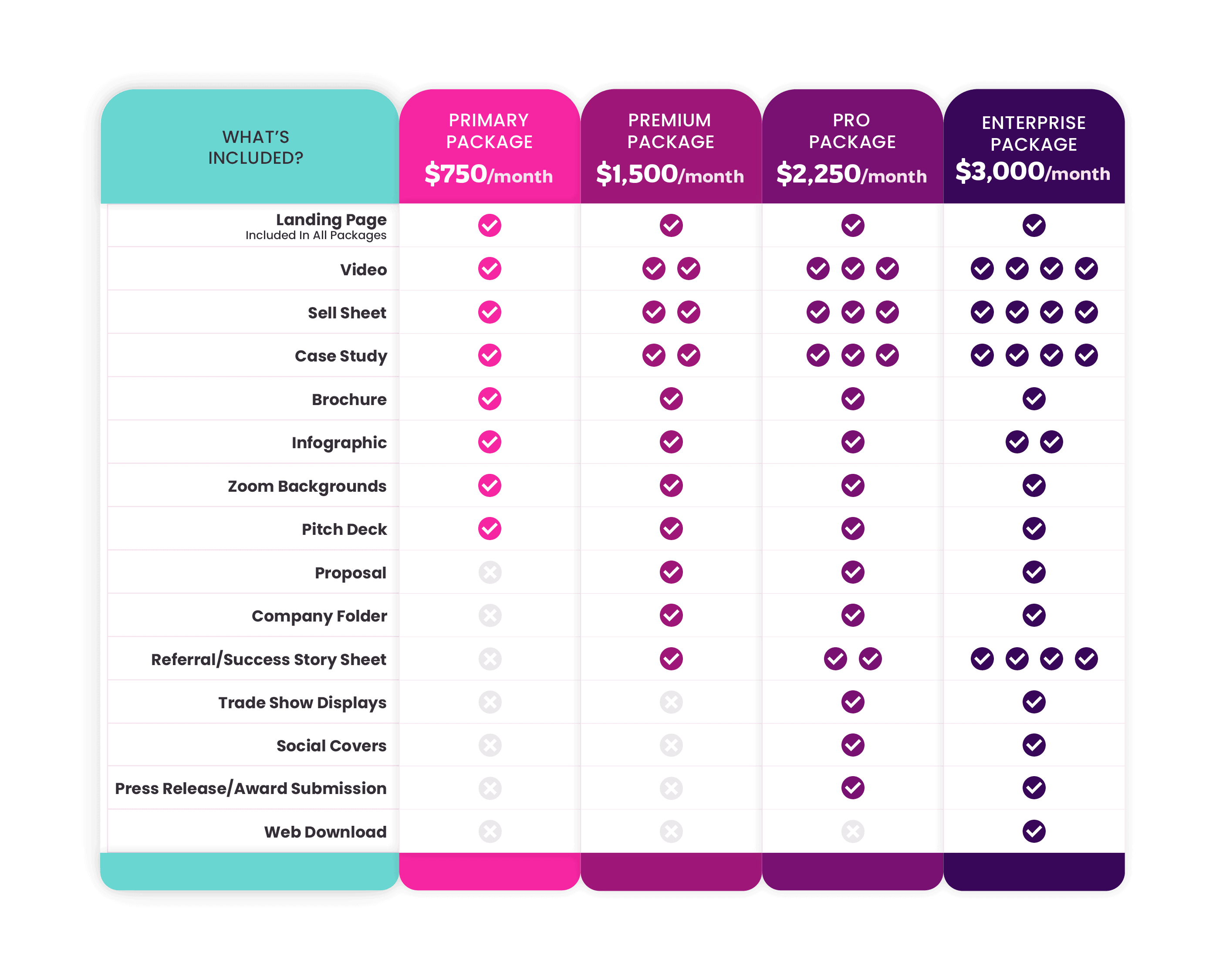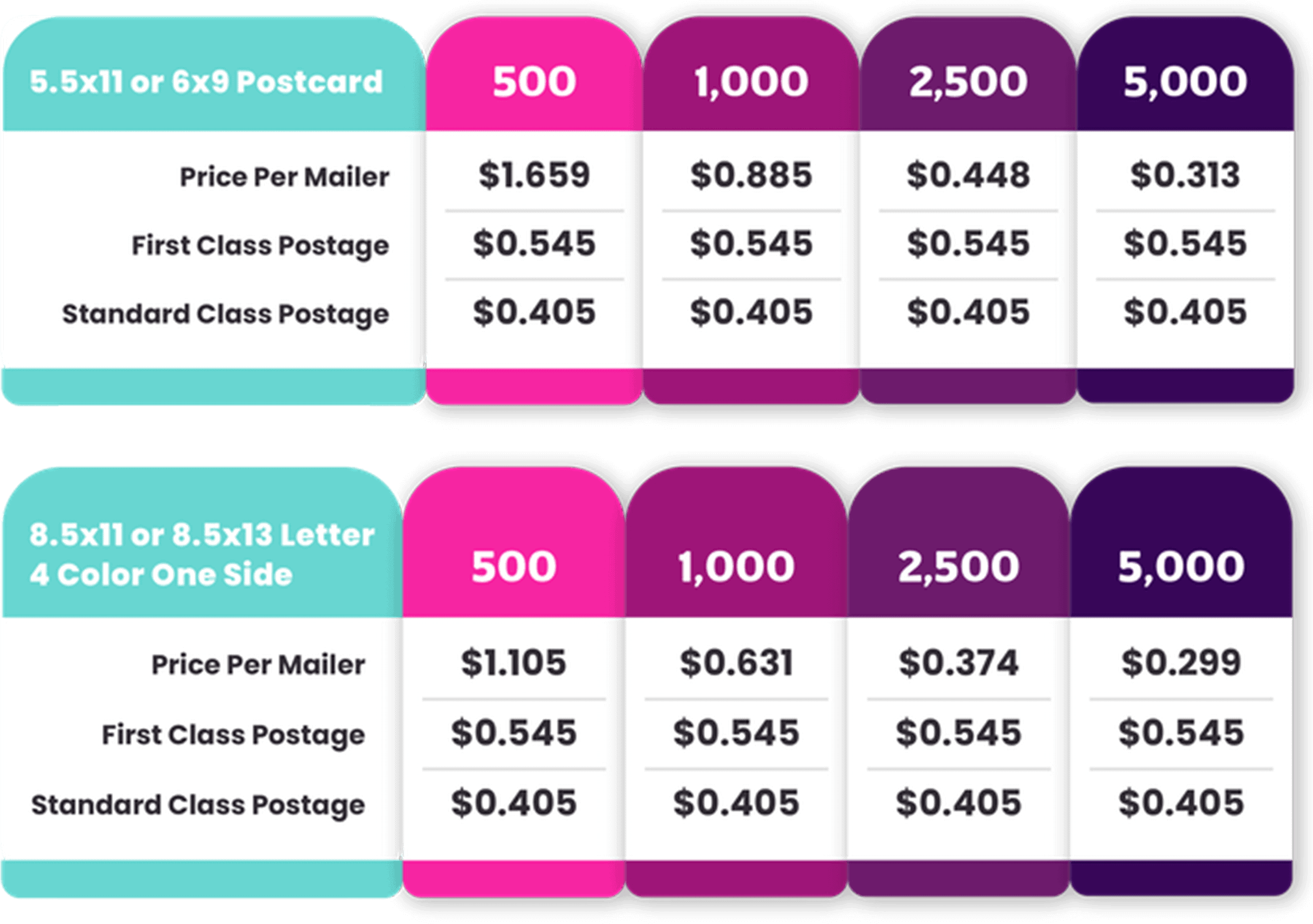Best Marketing Collateral for Customers in the Awareness Phase of the Buyer’s Journey
Every lead in the sales pipeline is in a different customer journey stage, which is why it’s essential to develop a marketing collateral strategy that aligns with where they are currently in the sales cycle. Creating business marketing collateral that aligns with the wants and needs of a potential buyer at the time is essential because it meets them right where they are without being too pushy or too hands off, which could result in missed opportunities.
The awareness stage of the buyer’s journey is when prospective businesses are initially introduced to a company and what they have to offer businesses like theirs. There are two ways sales teams enter potential customers into the awareness stage of the buyer’s journey: outbound and inbound lead generation efforts.
When it comes to outbound appointment setting efforts, sales reps build brand awareness by cold calling leads in the sales pipeline. During these cold calls, sales reps present the lead with information about their company’s product or service and how it would benefit their day-to-day operations.
On the other hand, potential buyers can enter the awareness stage of the buyer’s journey through inbound lead generation, which is when an individual is actively looking for a solution online and they discover your business via search engine. For a potential buyer to find your company’s information online, your website’s content must be optimized for search engines, which is a digital marketing strategy known as search engine optimization (SEO).
Marketing collateral in the awareness stage should be educational and informative. Here are some sales enablement assets that support customers in the awareness phase of the buyer’s journey:
Company Brochures
A company brochure typically is the first sales enablement asset people think of when it comes to marketing collateral. Brochures are great for the awareness stage of the buyer’s journey because they provide a brief overview of a variety of topics, including company history, product and service offerings, case studies, pricing, and more.
Overall, the goal of a company brochure is to capture the attention of potential buyers in a visually appealing way. They’re an effective sales and marketing asset because they’re budget-friendly, easy to understand, and can be used in a variety of sales scenarios.
For instance, businesses can print company brochures to bring to sales appointments set by sales development representatives (SDRs) or to distribute at local networking events. Company brochures can also be digitized and sent to prospects in the sales pipeline as an additional component of the company introductory phase of the appointment setting process.
Sell Sheets (White Papers)
Sell sheets (also known as white papers or leave-behinds) are ideal pieces of marketing collateral for potential customers in the awareness phase of the buyer’s journey because they provide in-depth insight into a specific product, service, or concept.
For example, let’s suggest you’re a commercial cleaning company that wants to generate more business for COVID-19 disinfection services, but very few leads in the sales pipeline understand how that process works. By creating a sell sheet for disinfection services, you can elaborate on the process, how it works, and present readers with a visual representation of why it’s beneficial for commercial businesses.
One of the best things about sell sheets is that they can be used for both internal and external purposes. Most importantly, they can be used in sales scenarios to guide leads to the end of the sales cycle. However, they can also be used by SDRs if they need an additional boost with their elevator pitch. If they’re not sure how to respond to a specific objection, sell sheets can be used to keep the conversation going with leads to convert them into sales appointments.
Promotional Videos
We see hundreds of promotional videos all over social media, so how effective can this content marketing strategy really be? Well, as it turns out, it’s pretty effective. A recent study actually showed that 54% of customers want to see more video content from brands. While we may already see a lot of video content on the internet and social media, consumers are continuously increasing demand for it.
No matter what stage of the customer journey a person is in, promotional videos are a great content marketing strategy to adopt for your sales enablement efforts. Video marketing is a significant component of your sales enablement strategy because it can be used for almost every scenario.
For example, you can use video to showcase an impactful case study that encourages viewers to envision themselves in the position of your customers. Additionally, you can present explainer videos that show viewers how complex processes work to make day-to-day operations easier (i.e., software).
Promotional videos can be used in a variety of marketing scenarios, from attaching them in email marketing to embedding them in social media posts and website pages. This allows users to have easy access to them, which improves the customer experience and encourages them to move further down the sales funnel.
While it’s important to just have social media profiles, that’s not nearly enough to generate customer awareness. If you really want to make your target audience aware of your business, it’s crucial to develop social media graphics that catch their attention and encourage them to interact with your content.
Social media graphics are marketing collateral that help businesses effectively establish and build their brand name for users across the internet. Ideally, social media graphics in the awareness phase of the buyer’s journey should present a call to action (CTA) that tells users what you want them to do with what you’re presenting them.
Many businesses develop social media graphics that guide users to their website to check out specific pages or read engaging blog posts. This is to encourage readers to interact more with your digital platform and convert them from users into leads. Users can convert into leads if they see that your content has value to them and their needs, then they can enter their contact information in a submission form on your website. From here, they are entered into the sales pipeline and routinely sent newsletters and email marketing promotions.
Landing Pages
With targeted Google ads, social media promotions, and email marketing efforts, you can direct interested users toward what your company has to offer—and this can be accomplished through landing pages. Landing pages are standalone web pages designed to be a conversion page for a variety of marketing efforts. For example, when an intended user enters particular keywords into a search engine, they can discover your landing page at the top of their search results page. Additionally, they can be implemented into social media and email marketing efforts to convert prospects into leads, or even customers.
Overall, the goal of a landing page is to get the prospect to submit their info or make a purchase with as few distractions as possible. By driving users to a landing page with high purchase intent, you make it difficult for them to further explore your site.
A good landing page works to satisfy the users intent from their initial search or click. By making it harder to explore your site, you’re helping the user achieve their intent quicker. A landing page encourages them to input their information so they can receive more marketing materials from your company. For these pages, menu bars are typically removed to keep the users focused on the initial intent of the landing page.
In one instance of landing page usage, when a user types in a specific keyword into a search engine, this shows that they’re actively looking for a solution to a problem. With a landing page, you’re able to enter the awareness stage of the buyer’s journey because you’re introducing them to what your company has to offer and why it’s beneficial for their company.
For example, if a user types into a search engine “how often should I change my HVAC unit’s air filters,” they can be directed to a sponsored landing page that discusses the benefits of investing in a professional preventative maintenance solution, including not having to worry about how often to change your building’s air filters. While this landing page presents customer awareness, it also allows your company to establish brand credibility and obtain the reader’s contact information through a form.
Guides
Guides are gated sales enablement assets that encourage users to gain more in-depth insights about a particular concept. To access a guide, an interested user must enter their contact information, which in turn enters them into your company’s sales pipeline.
Guides are designed to be user-friendly and give readers complex, yet easy to understand, information. For example, a marketing agency can develop a guide to provide exclusive insight into how they can maximize their business’s social media marketing strategy. If a user submits their information to access the guide, it could mean they’re looking for a social media marketing solution that yields business growth. From here, they’re entered into the sales pipeline and an SDR can contact them to pitch the marketing services their company offers. Additionally, the SDRs can present a targeted pitch since they know they’re interested in accelerating their social media marketing efforts.
E-books
E-books provide a complex overview of various concepts. Typically, an e-book is a collection of guides that relate with one another. For example, if we relate back to the marketing agency example, an e-book titled “How To Maximize Your Business’s Digital Marketing Strategy” could contain a variety of topics, including social media marketing, SEO, and more.
An e-book is great for a potential customer in the awareness stage of the buyer’s journey because it provides in-depth insight into a variety of information. Additionally, this establishes credibility with your business, because they trust your insight when it comes to said topics or ideas.
Key Takeaways
While there are many different types of marketing collateral in the world, some sales enablement materials are more significant for the awareness stage of the buyer’s journey than others. Since customer awareness marketing assets are intended to be educational and informational, it’s essential that the sales and marketing assets align with where the potential buyer is in the sales cycle.
To learn about the best types of marketing collateral for all stages of the buyer’s journey, download our exclusive guide here.
If you need help designing high-quality marketing collateral to capture the attention of your target market, reach out to the graphic design experts at Creative Sweets!










Social Media Graphics